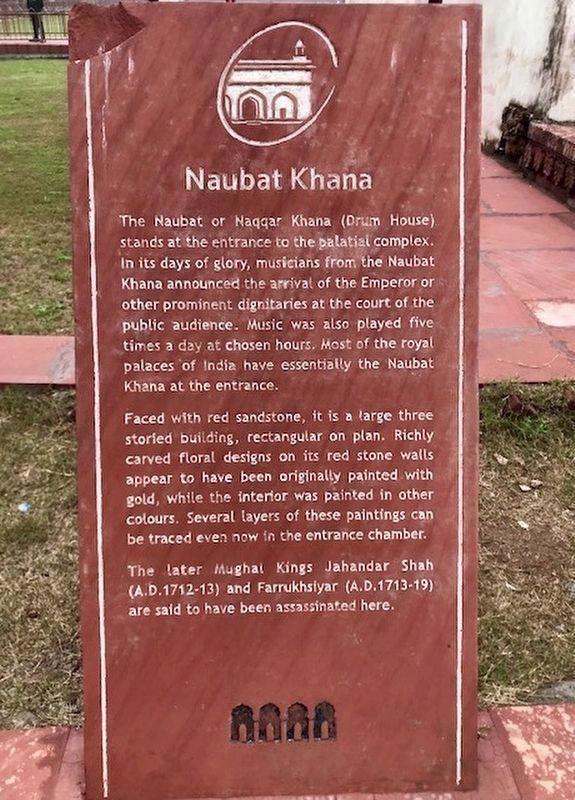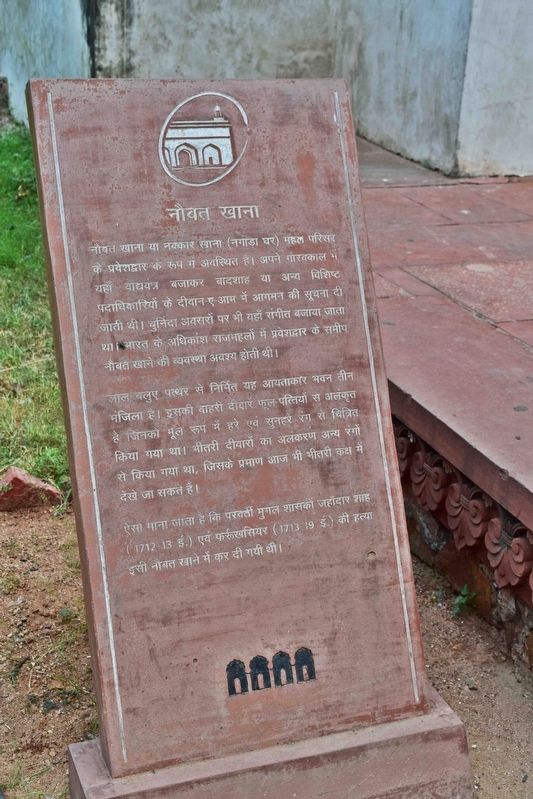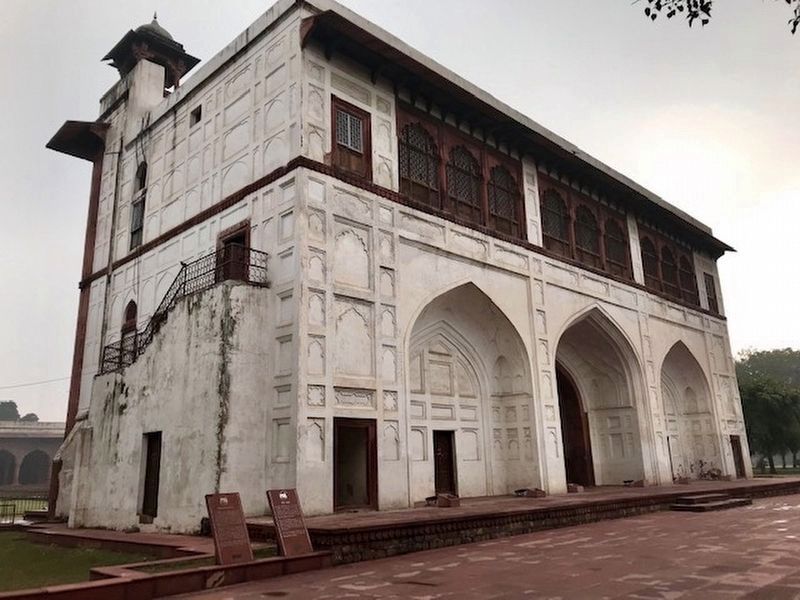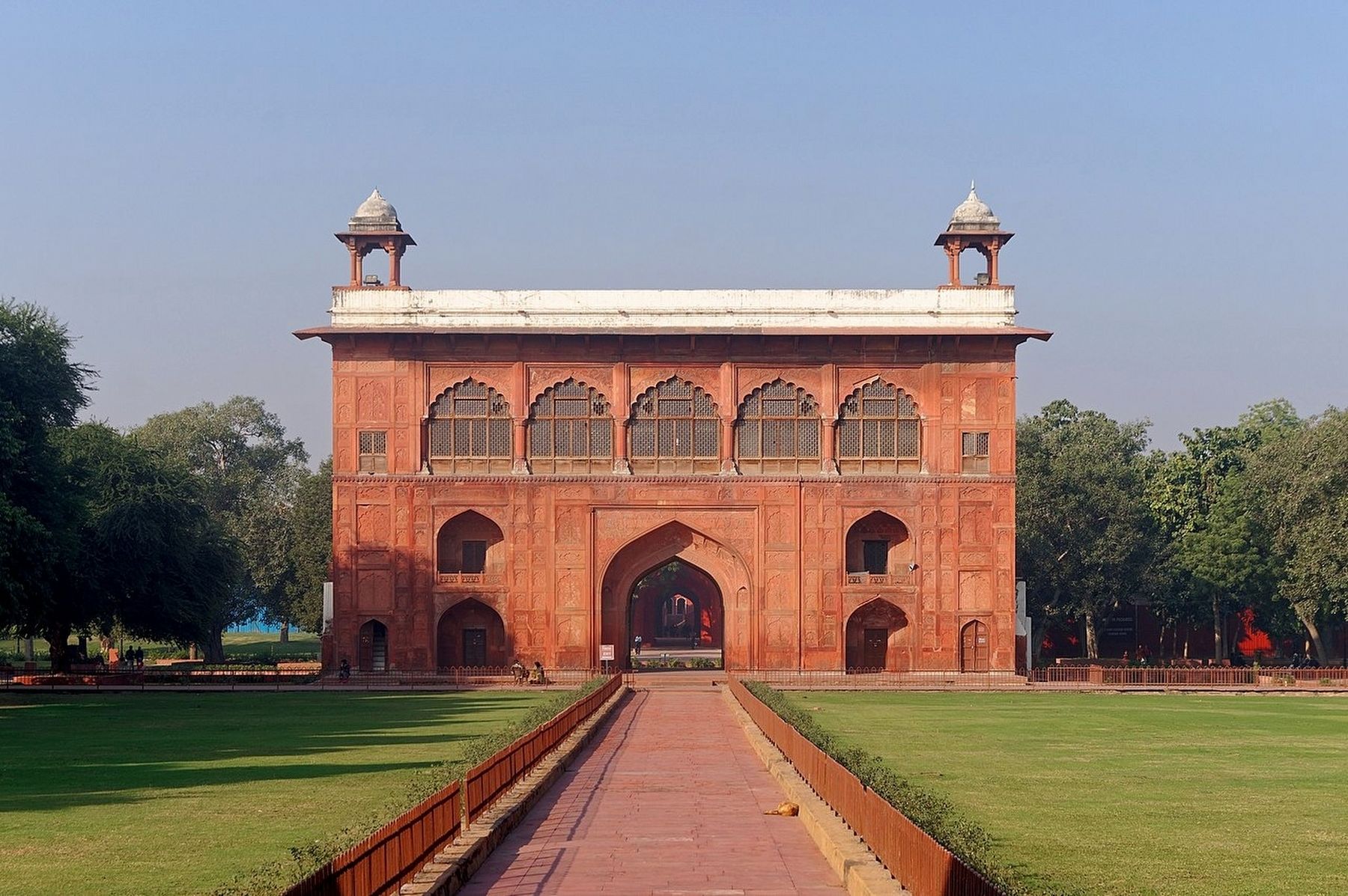Naubat Khana
Faced with red sandstone, it is a large three storied building, rectangular on plan. Richly carved floral designs on its red stone walls appear to have been originally painted with gold, while the interlor was painted in other colours. Several layers of these paintings can be traced even now in the entrance chamber.
The later Mughal Kings Jahandar Shah
(A.D.1712-13) and Farrukhsiyar (A.D.1713-19)
are said to have been assassinated here.
(Hindi version of marker text not transcribed)
Topics. This historical marker is listed in these topic lists: Architecture • Arts, Letters, Music. A significant historical year for this entry is 1739.
Location. 28° 39.353′ N, 77° 14.456′ E. Marker is in New Delhi, National Capital Territory of Delhi, in Central Delhi District. Touch for map. Marker is in this post office area: New Delhi, National Capital Territory of Delhi 11000-6, India. Touch for directions.
Other nearby markers. At least 2 other markers are
More about this marker. The marker is located in the Red Fort Complex, on the west side of the Naubat Khana, which currently houses the Archaeological Museum.
Also see . . .
1. Naubat Khana (Red Fort). "The Naubat Khana, or Naqqar Khana, is the drum house that stands at the entrance between the outer and inner court at the Red Fort in Delhi." (Submitted on January 23, 2020.)
2. Red Fort (Wikipedia). "Emperor Shah Jahan commissioned construction of the Red Fort on 12 May 1638, when he decided to shift his capital from Agra to Delhi. Originally red and white, Shah Jahan's favourite colours, its design is credited to architect Ustad Ahmad Lahori, who also constructed the Taj Mahal. The fort lies along the Yamuna River, which fed the moats surrounding most of the walls. Construction began in the sacred month of Muharram, on 13 May 1638. Supervised by Shah Jahan, it was completed on 6 April 1648. Unlike other Mughal forts, the Red Fort's boundary walls are asymmetrical to contain the older Salimgarh Fort. The fortress-palace was a focal point of the medieval city of Shahjahanabad, which is present-day Old Delhi. Its planning and aesthetics represent the zenith of Mughal creativity prevailing during Shah Jahan's reign...." (Submitted on January 23, 2020.)
Credits. This page was last revised on January 24, 2020. It was originally submitted on January 23, 2020, by Andrew Ruppenstein of Lamorinda, California. This page has been viewed 425 times since then and 33 times this year. Photos: 1, 2, 3, 4. submitted on January 23, 2020, by Andrew Ruppenstein of Lamorinda, California.



